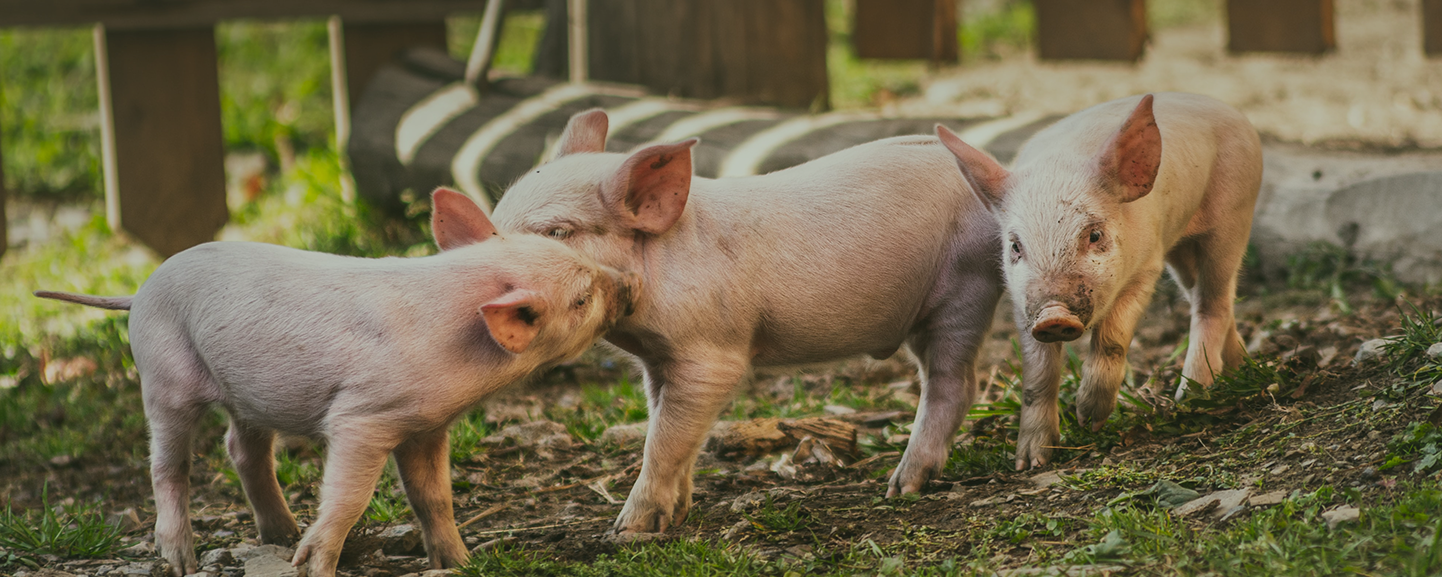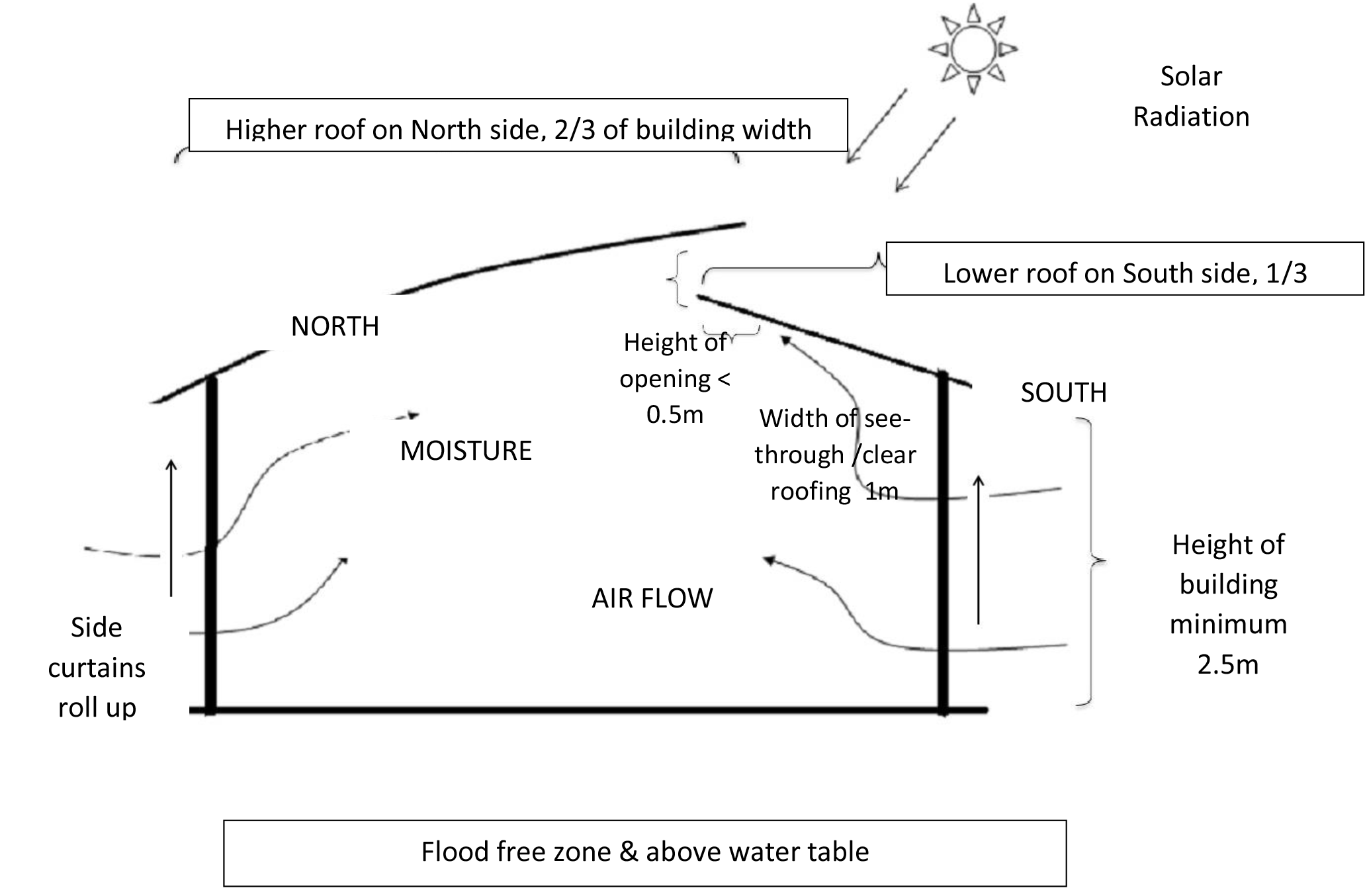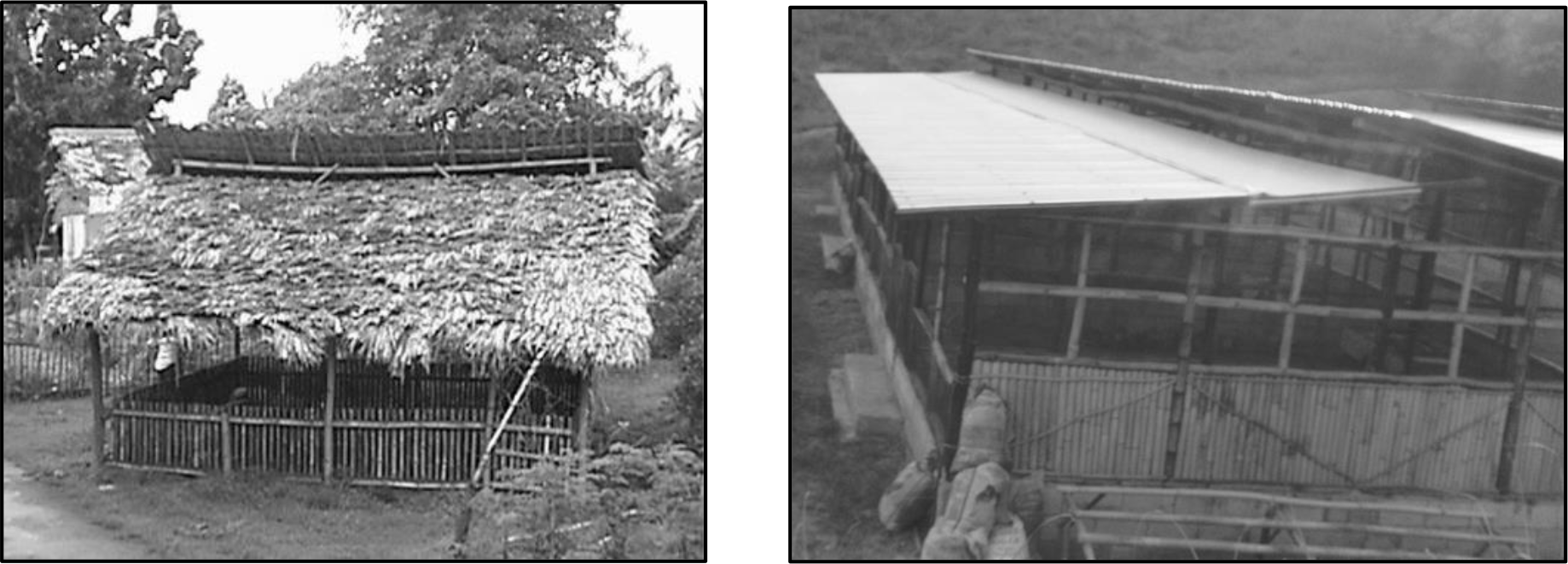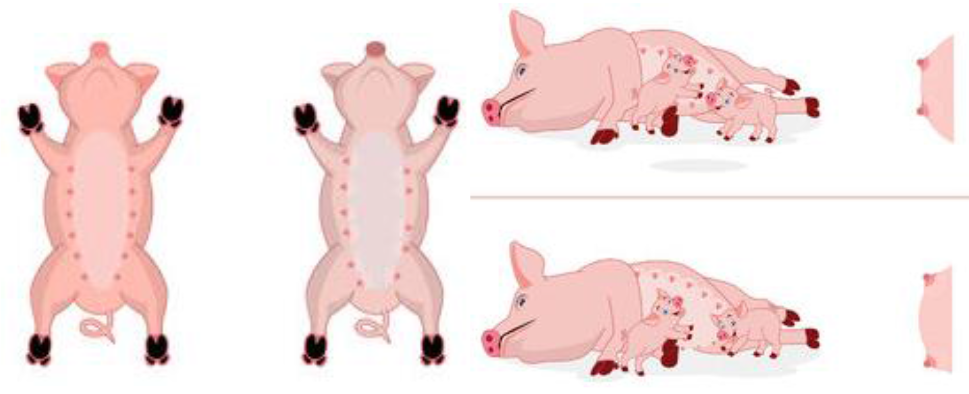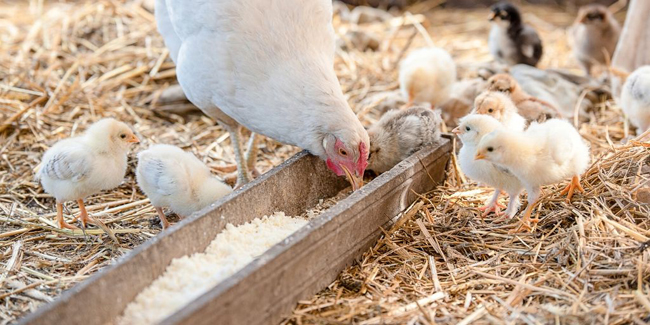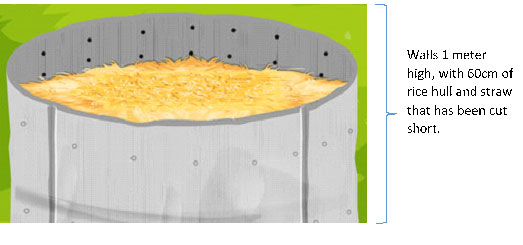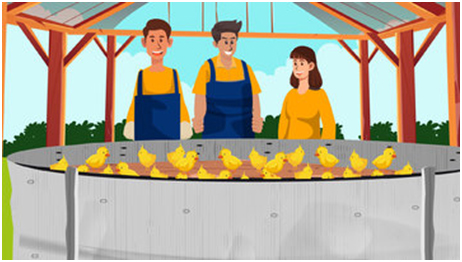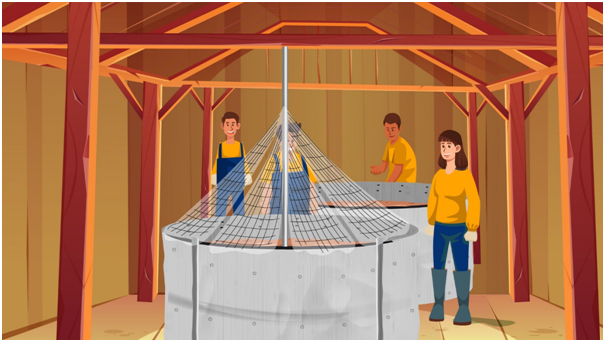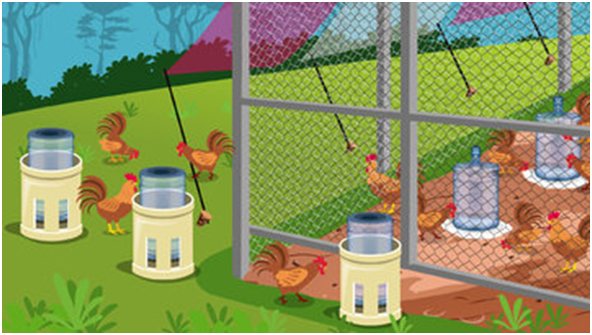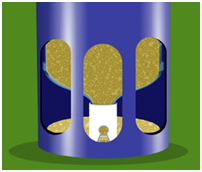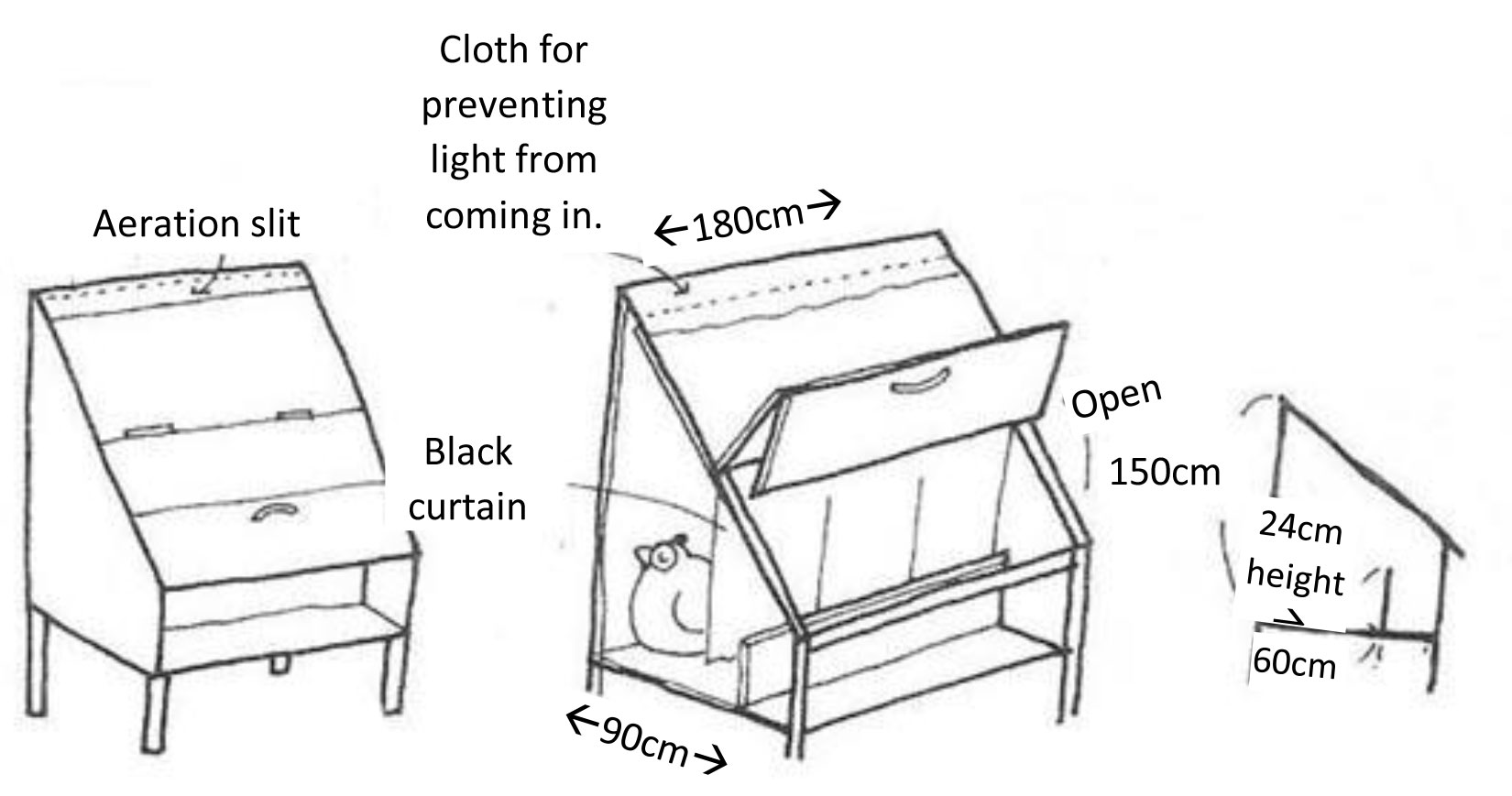Mating & Pregnancy
1. Natural Farming female pigs can become pregnant at 6 to 7 months old.
- a. Ideally, the pig should be 90-100kgs.They should not reach 110-150 kg before pregnancy. For the first pregnancy, it is better to use a younger male pig that is not too heavy for the female pig.
- b. Choose a female pig with these characteristics:
Sound Guilt

|
Not Sound Gilt

|
| Hight tail setting |
Low tail setting |
| Proper set to hocks |
Post legged |
| Large, even-sized toes |
Small inside toe |
| Set to pasterns |
Straight pasterned |
| Forearm slope |
Buck kneed |
| Moderately long neck |
Short neck |
| Sloping shoulder |
Straight shoulder |
| Level top and rump |
High top and steep rump |
| Adequate depth in stomach middle area |
Slender stomach in middle area |
| Long, slender teats properly spaced |
Inverted teat, short, blunt, thick, undesirable teat quality |
- c. Choose a female pig that has good teats characteristics. Gilts should possess at least seven evenly spaced teats on either side. Longer thinner teats are better. Piglets have difficulty suckling short teats and as the sow matures the teats increase in size and make the problem worse. Please see the following diagrams for desired teats characteristics:
- i. The teat formation of # 1, 2, and 3 are functional, with 1 being the best choice. # 4 is inverted and non-functional. And 5 is damaged and non-functional. Hence pigs with teats like #4 and 5 should not be chosen to be mothers.
- ii. The placement of the teats should parallel to each other and not too far apart so that they are accesible to the piglets when the pig is lying down.
The teats are not located too far to the sides of the pig’s body so that when the pig lays down, the piglets can reach the teats.
2. Choose a female pig with large vulva, without signs of defects. The vulva is the external female reproductive organs. A normal pig’s vulva looks like an upside down tear drop. Avoid pigs with a vulva that points any direction other than straight down.
3. Choose gilts that have sound legs and feet without any sign of weakness, and toes of even size. Gilts should be wide through the hindquarters with depth and squareness in the body cavity; ribs should be well sprung.
4. A gilt’s temperament is also important. It should be quiet but alert and active. Do not choose flighty or overly aggressive gilts.
5. Young, healthy male pigs should be mated for the first time when they are 8 to 10 months old. It is best to have male pigs that are not from the same genetic pool. It may be easiest to rent a male pig to use for breeding.
6. Female pigs are ready for mating 5 to 7 days after they have weaned their piglets. If they do not get pregnant, they will be ready to mate again in about three weeks (pigs come into heat about every 21-30 days).
It is important to mate the female pig when she is ready. The more times that are missed the weaker the pig gets and the less number of piglets she may have.
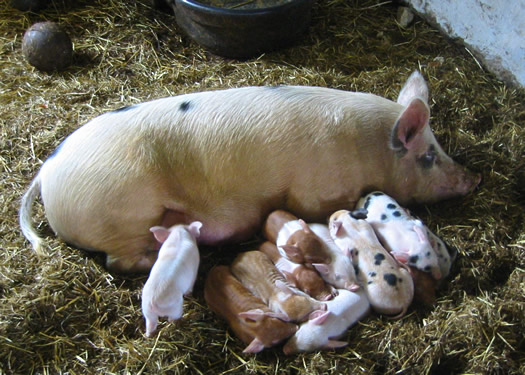
- What are the signs that a female pig is ready to mate?
(The sow is uneasy and noisy. The tail gets straight. When you put pressure on the back, the ears will go straight. The reproductive area is red. The vulva is red and there may be mucous in the area.)
- It requires keen observation to see if the female pig is ready for mating. When you notice she is ready, the best time to mate is on the second day (morning and late afternoon). The mating symptoms will last 3 days.
7. Mating time can vary between 5 to 20 minutes.
8. Pregnancy will typically last 115 days (3 months, 3 weeks, 3 days) after conception. They will not show until they are 3 months pregnant (pot bellied and round in the middle.) There are a few hints to determine if she is pregnant or not. 1) Monitor her heat cycle. If she is pregnant, then she shouldn’t come back into heat. 2) Another possible sign is when a pig is pregnant, the vulva tip may gradually rotate and point up. This isn’t a 100% accurate test and can vary among individual pigs. The logic is that if there are piglets inside her, as the piglets get larger and weigh more, they start to pull on the pig’s reproductive tract, which pulls on the pig’s vulva, causing it to tip up.
9. Normally, female pigs can give birth to about 10 to 12 piglets twice a year for 4-5 years. NF pigs could give birth between 14-18 piglets.
10. Choosing the right mate for your pig is very important because inbreeding causes the pigs to be unhealthy and less productive. It may be easier for one family in a community to raise healthy male boars for breeding and different families to raise sows and piglets. It takes different specialized skills to raise boars and sows.Generally, the closest relationship should be 4 generations in the direct lineage (great grandparent to great grandchild) or first cousins in non-linear relationships. But the further the relationship the better. Below is a chart showing which relationships can be bred (green), which is acceptable but not ideal (yellow), and which is an absolute no (red). So you will need to make sure you track your pigs in order not to accidentally inbreed them. If you will be outsourcing, make sure to ask the breeder for the lineage also to make sure inbreeding doesn’t take place.
Breeding Relationship Chart
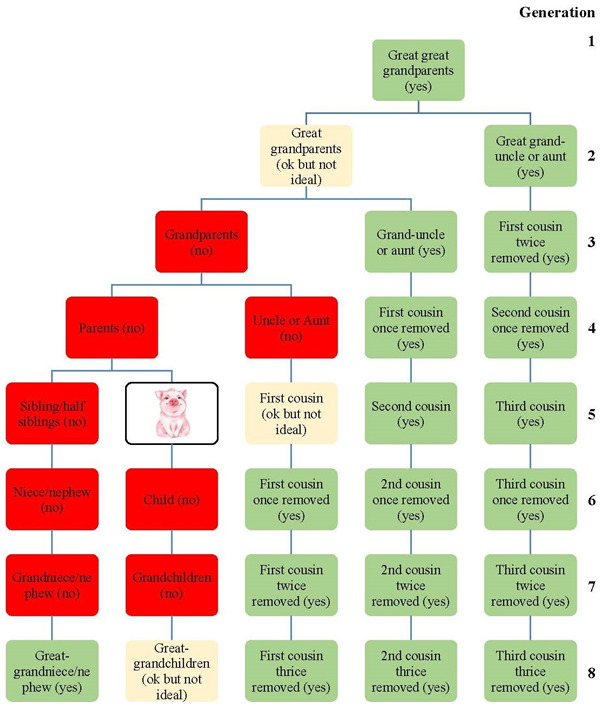
1. The size of the birthing pen should be about 3m x 4m for every sow.
2. Make sure the floor in the birthing pen isn’t too soft that the piglets get crushed by their mother accidentally.
3. The birthing process, called farrowing, takes anywhere from 3 to 8 hours. First time mothers may take longer than experienced mothers.
- a. When the sow is getting ready to give birth, she will lay on her side. Right before a piglet is born, she will raise her leg up and may twitch her tail.Usually the first piglet is born and then there is a wait before the second piglet comes.This pause in births can be as much as an hour. After the second piglet, the births usually happen pretty quickly.
- b. When the piglets come out, observe but do not handle the piglets right away. The piglet’s first contact should be with its mother. If a piglet smells your hand first, it will think you are the mother, or the source of food, and they will get confused, searching for you instead of its mother. Once the piglet has found its mother’s nipples, if you need to handle the piglet for some reason, then you may. If there are health issues that requires you to interfer and handle the piglet, afterward, help the piglet to suck on one of the sow’s nipples before you leave.
- c. The first few pigs are usually born headfirst. The piglets born later in the litter may be born backwards. This is normal and not an emergency.
- d. The sow is most likely done when she acts peaceful, isn’t shivering or acting uncomfortable. She will begin talking to the piglets. After the piglets are all born, she will pass the placenta. The placenta usually takes 1 to 4 hours to be passed.
- e. You need to monitor the sow closely the first 24 hours after farrowing. Make sure that she isn’t showing signs of infection.
- f. She will have bloody discharge for a few days, which is normal and expected. As long as she is eating, acting normal and comfortable, then she is most likely fine.
- g. Occasionally a piglet will be born not breathing.This is commonly due to mucous in the nose. You can take a small piece of string or straw and tickle inside the nose to make the piglet sneeze or cough.This will remove the mucous, allowing the piglet to breathe. If the piglet isn’t breathing and doesn’t have a pulse, it may be stillborn. Make a note for future litters.
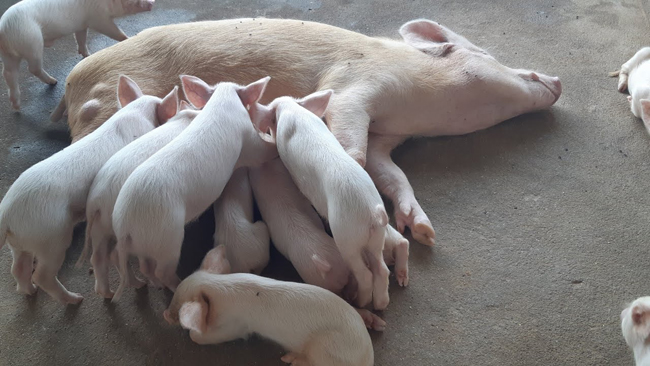
4. Day 2 – cut the sharp teeth (usually 4 teeth) of the piglets so they don’t bit the sow’s nipples.
5. By this time, you should be able to observe whether the sow might be “a careless mother”, one that does not watch how it gets up or lay down among her piglets and ends up accidentally suffocating a piglet. In this case, you may have to cage her in a way that the piglets can still come to her for milk, but will not be crushed by her.
6. Day 3 – give piglets an injection of iron vitamins.
7. The piglets will be dependent on the mother’s milk for the first 10-14 days, so make sure the sows are getting good quality feed so she will produce good milk. Continue to give her fresh vegetable cuttings in the morning, especially moringa, and it is best not to feed her eggplant, pineapple, snap beans or long beans! These plants create gas and indigestion for the pigs. Feed her at 4pm using the Feed Lactating Formula (RP2). You may adjust the quantity as needed.
8. Around 14 days old, castrate male piglets that you will be raising for meat.
9. Day 19 - start encouraging the piglets to feed on fresh soft vegetables mixed with the soil from the pen so the piglet’s intestines will be strengthened; and in the afternoon, when you are feeding the sows, feed the piglet the Pig Booster Feed (PBF) formula to start encouraging the piglets to start the weaning process.
10. After 25 days, introduce more high protein plants.
11. At 35 days, encourage the piglets to eat more of the feed than breast feeding by separating the sows and the piglets during scheduled meal time.
12. Day 40 – start introducing them to the bigger pen with the larger pigs, a little bit each day.
13. At 45 days, you may separate the piglets from their mothers. Introduce a little calcium and calcium phosphate to the piglets’ food and/or drink to help their bones grow strong. Do not wean them earlier than 45 days.
